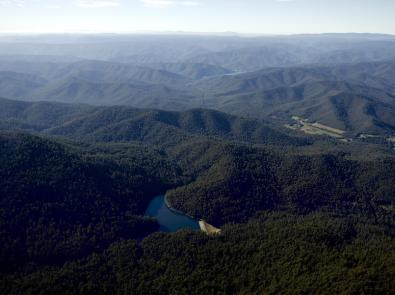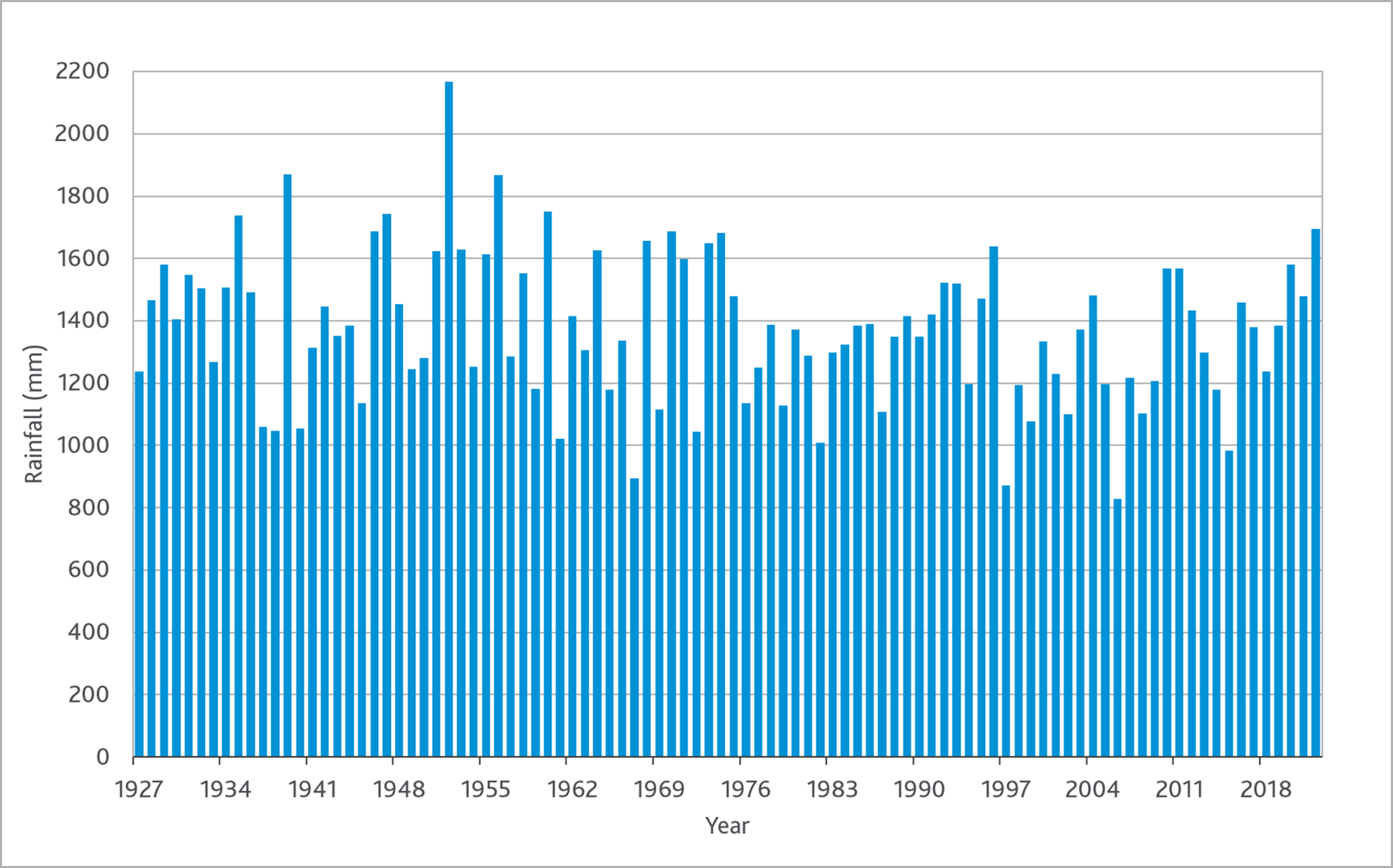O’Shannassy Reservoir is filled by rainfall received by the surrounding catchments. It supplies water to Silvan Reservoir, which distributes it to most parts of Melbourne.
When the reservoir overflows, water spills into the Yarra River. Some of this water can be pumped back out into Sugarloaf Reservoir.
Key facts
The dam at O’Shannassy Reservoir is an earthfill embankment with reinforced concrete core wall, and was completed in 1928.
- Catchment area: 11,900 hectares
- Surface area: 27 hectares
- Total capacity: 3,123 megalitres
- Dam height: 34 metres
- Dam length: 226 metres
Water catchment protection and access
O’Shannassy Reservoir is an on-stream reservoir, filled by rivers or rainfall that runs off the nearby forested water catchments. There is:
- no entry into the protected water supply catchment, with offenders subject to prosecution under the Water Act 1989 (Vic)
- no entry into the water supply catchment buffer area below the reservoir, except for pedestrians at recreation sites: O’Shannassy Aqueduct Trail (Road 18)
- entry permitted for vehicles on public roads: Marysville Woods Point Rd and Road 8.
Melbourne Water continually reviews our protected catchments to determine if more areas can be opened to the public. While this would allow more people to enjoy Victoria’s vast natural spaces, it must be balanced with protecting our precious drinking water for the safety of our community.
Rainfall over the years
View highlights from our historical rainfall data for O’Shannassy Reservoir, including annual rainfall, monthly averages, and the wettest and driest years by month.
Live rainfall and water storage data
Get the latest information on each of our 10 major reservoirs, including daily water storage levels and hourly rainfall and river level data.
Annual rainfall at O’Shannassy (1927-2022)
Monthly rainfall records (mm)
Last updated: January 2023
| Month | Wettest | Driest | Average |
|---|---|---|---|
| January | 174.2 (1956) | 1.8 (1990) | 66.0 |
| February | 246.4 (1939) | 0.4 (1991) | 62.2 |
| March | 189.0 (1970) | 3.6 (1951) | 71.8 |
| April | 295.7 (1935) | 13.2 (1963) | 102.4 |
| May | 364.2 (1960) | 3.0 (1934) | 125.0 |
| June | 438.4 (1952) | 23.0 (2006) | 136.0 |
| July | 310.4 (1964) | 45.0 (1994) | 147.9 |
| August | 433.1 (1939) | 49.8 (1982) | 170.9 |
| September | 280.8 (1992) | 34.0 (1961) | 148.8 |
| October | 315.5 (1934) | 22.4 (2015) | 134.1 |
| November | 252.5 (1952) | 25.9 (1927) | 111.6 |
| December | 231.6 (1930) | 9.4 (1972) | 96.6 |
| Annual total | 2166.9 (1952) | 829.4 (2006) | 1373.3 |
You may also like...
Our water supply system
Melbourne has some of the highest-quality drinking water in the world. Learn how it makes its long journey to your tap.


